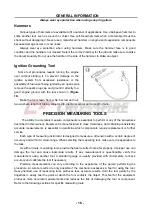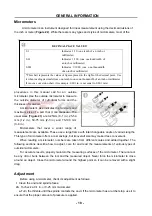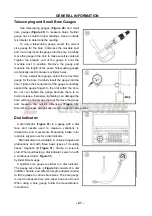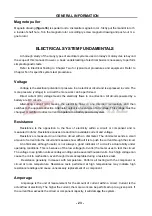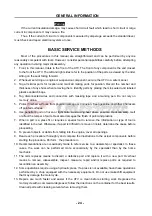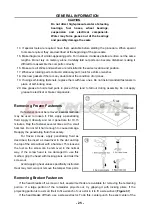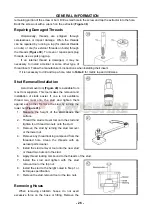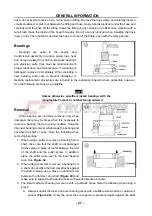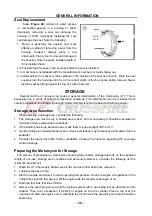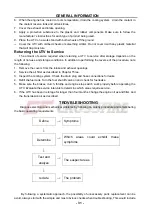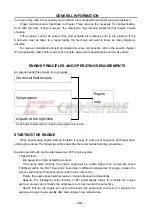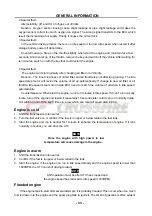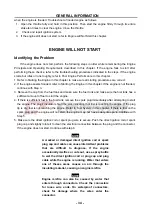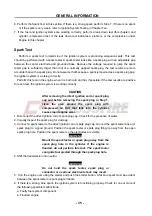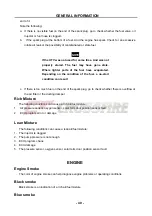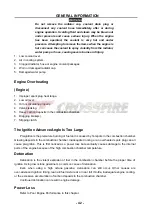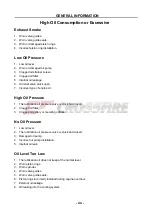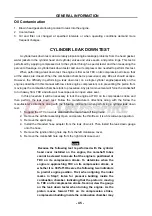
GENERAL INFORMATION
- 30 -
Seal Replacement
Seals (Figure 49) contain oil, water, grease
or combustion gasses in a housing or shaft.
Improperly removing a seal can damage the
housing or shaft. Improperly installing the seal
can damage the seat. Note the following:
1. Prying is generally the easiest and most
effective method of removing a seal from the
housing. However. Always place a rag
underneath the pry tool to prevent damage to
the housing. Note the seal’s installed depth or
if it is installed flush.
2. Pack waterproof grease in the seal lips before the seal is installed.
3. In most cases, install seals with the manufacturer’s numbers or marks facing out.
4. Install seals with a socket or driver placed on the outside of the seal as shown in. Drive the seal
squarely into the housing until it is to the correct depth or flush as noted during removal. Never
install a seal by hitting against the top of it with a hammer.
STORAGE
Several months of non-use can cause a general deterioration of the motorcycle, UTV This is
especially true in areas of extreme temperature variations. This deterioration can be minimized with
careful preparation for storage. A properly stored motorcycle is much easier to return to service.
Storage Area Selection
When selecting a storage area, consider the following:
1. The storage area must be dry. A heated area is best, but not necessary. It should be insulated to
minimize extreme temperature variations.
2. If the building has large window areas, mask them to keep sunlight off the UTV .
3. Avoid buildings in industrial areas where corrosive emissions may be present. Avoid areas close to
saltwater.
4. Consider the area’s risk of fire, theft or vandalism. Check with an insurer regarding UTV coverage
while in storage.
Preparing the Motorcycle for Storage
The amount of preparation a motorcycle should undergo before storage depends on the expected
length of non-use, storage area conditions and personal preference. Consider the following list the
minimum requirement:
1. Wash the UTV thoroughly. Make sure all dirt, mud and other debris are removed.
2. Lubricate the drive chain.
3. Start the engine and allow it to reach operating temperature. Drain the engine oil regardless of the
riding time since the last service. Fill the engine with the recommended type of oil.
4. Drain the fuel tank
fuel lines throttle.
5. Remove the spark plug and ground the ignition system with a grounding tool as described in this
chapter. Then pour a teaspoon (15-20ml) of engine oil into the cylinder. Place a rag over the
opening and Start the engine over to distribute the oil. Remove the grounding tool and reinstall the
spark plug.

